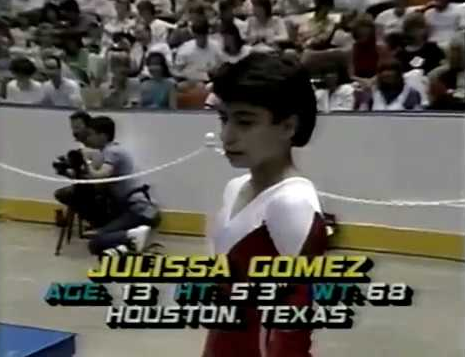When I was younger, I did gymnastics. “Do” was the verb that went with “gymnastics.” You don’t “practice” gymnastics, like you do yoga (or law, for that matter), and you don’t “play” gymnastics like tennis, soccer, softball, volleyball, or most other sports. That one word anomaly should have been the give-away.
I recently finished reading the book, “Little Girls in Pretty Boxes: The Making and Breaking of Elite Gymnasts and Figure Skaters.” The book, authored by Joan Ryan and first published in 1995, allowed me to synthesize the many scattered thoughts I had about my experience with gymnastics, which thoughts were just always beyond my mind’s ability to understand. I intuitively knew there was something wrong with the sport, but now I have a better understanding.
The book was reprinted in 2018, after the Larry Nassar events and the perverse fascination with, “How could he have gotten away with what he did for so long?” But the perversity lies not only with the Nassar events, which is a given, but gymnastics itself. The book is danse macabre, page upon page of heartbreaking stories of young gymnasts’ lives plagued with eating disorders, low self-esteem, self-harm, and mental health issues. It tells of smuggled food to starving girls who are barely eating enough to sustain themselves for workouts that last longer than you or I might spend at our job on a given day. In addition to the punishing physical demands of the sport, it mentions the emotional and sometimes physical abuse the young gymnasts suffered. At one point, the author posits that child labor laws should be applied.
It’s a sordid tale and rightfully vilifies the overly-ambitious coaches, such as the Karolyis, who were reportedly only affectionate to their gymnasts when the cameras were on them, but screaming at them at their “ranch,” which name conjures pastoral images but which, according to those who lived there, was far from that. The book tells about villainous coaches demanding their gymnasts perform with broken bones, weighing them every day and, if not to their liking, telling them they were fat, or lazy, or whatever abusive phrase they believed was motivational. It also appropriately places the lion’s share of the blame on the sport’s oversight organization, now called USA Gymnastics, which then and now continues to deny the profound problems with the sport and which organization allowed Nassar to thrive for years.
Each of the young ladies’ stories in the book begins with, “When I was watching the [name a year] Olympics on TV, I dreamed of being an Olympic gymnast….” and ends with an explanation of why the gymnast “retired” from gymnastics at the age of 16 or 18 or 26. The only story that didn’t begin or end that way was that of Julissa Gomez, who didn’t have the chance to tell her story because she broke her neck on a vault, was paralyzed and died several years later from complications.
Gymnastics is short lived. Its stars are children with elfin-sized bodies. Do we want to hold children up as icons? – young creatures whose brains have not yet even fully developed (think what happened to Michael Jackson or Brittany Spears)? Those child-star gymnasts “retire” before most people graduate from college. Do parents really want their child to “retire” from a sport at age 16? I never “retired” from gymnastics, I quit. I, and all of my gymnastics friends nowhere close to the ability of those elite gymnasts memorialized in the book, knew that at some undetermined point in time – maybe 9th grade or maybe even 11th – we would need to quit because you couldn’t surpass your physical limitations (height, weight, diminishment of recklessness, and development of fear of bodily injury), and so there was nowhere else to go. And even in my gym, where the coaches were kind and compassionate, we also had weigh-ins while at the same time watching one of our own struggle at a very young age with an eating disorder and related mental health issues.
Gymnastics is not a lifetime sport. When you quit gymnastics, you can’t ever go to the gym on day when you have nothing else to do and do an arial or a back handspring. The second you walk away, your abilities start to fade, and they fade quickly. The money gladly given over for sparkly leotards is all wasted and there truly is nothing tangible to show. Okay, so maybe I can do a headstand and handstand in yoga, but those are truly the only vestiges of years spent at the gym. But parents can’t help but look at those beautiful, tiny, lithe gymnasts on the television and dream, “I’d like my daughter to be just like those darling girls.” If you’re one of those parents dreaming big dreams for your child, run, do not walk, away from gymnastics.


Woah! I’m really loving the template/theme of this website. It’s simple, yet effective. A lot of times it’s difficult to get that “perfect balance” between superb usability and visual appearance. I must say you have done a superb job with this. Additionally, the blog loads very fast for me on Opera. Outstanding Blog!
I want to express appreciation to you just for bailing me out of this type of circumstance. After checking through the world-wide-web and seeing ways which were not productive, I believed my entire life was gone. Existing devoid of the approaches to the problems you’ve solved by means of your website is a critical case, and those which might have in a negative way damaged my entire career if I had not encountered the blog. Your actual training and kindness in playing with all areas was excellent. I’m not sure what I would’ve done if I had not discovered such a solution like this. I can at this time relish my future. Thanks so much for this reliable and effective guide. I will not be reluctant to propose your site to any person who should get direction on this area.